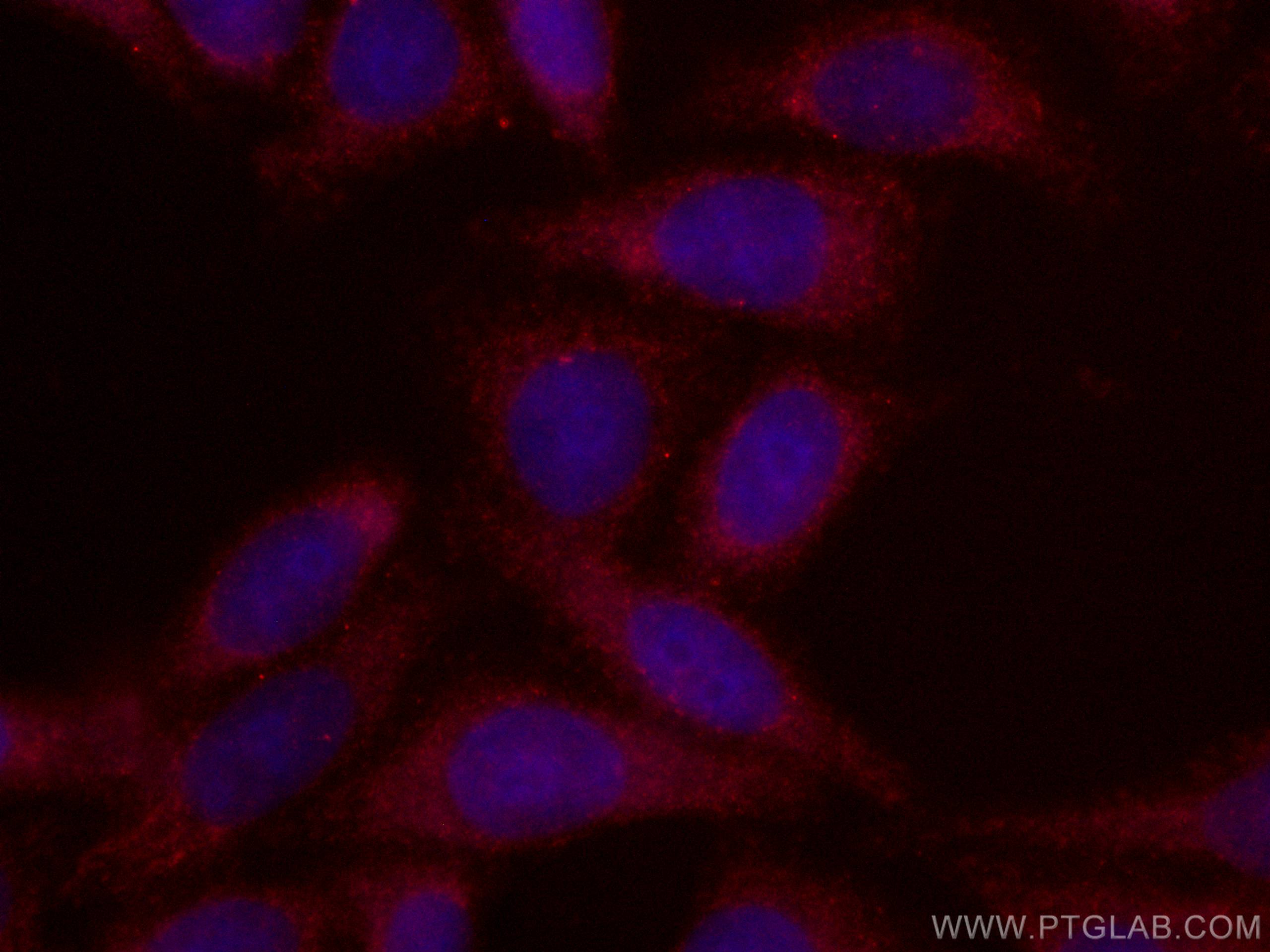GRP75 Monoklonaler Antikörper
GRP75 Monoklonal Antikörper für IF/ICC
Wirt / Isotyp
Maus / IgG2a
Getestete Reaktivität
human, Maus, Ratte
Anwendung
IF/ICC
Konjugation
CoraLite®594 Fluorescent Dye
CloneNo.
2B12F2
Kat-Nr. : CL594-67563
Synonyme
Geprüfte Anwendungen
| Erfolgreiche Detektion in IF/ICC | HepG2-Zellen |
Empfohlene Verdünnung
| Anwendung | Verdünnung |
|---|---|
| Immunfluoreszenz (IF)/ICC | IF/ICC : 1:50-1:500 |
| It is recommended that this reagent should be titrated in each testing system to obtain optimal results. | |
| Sample-dependent, check data in validation data gallery | |
Produktinformation
CL594-67563 bindet in IF/ICC GRP75 und zeigt Reaktivität mit human, Maus, Ratten
| Getestete Reaktivität | human, Maus, Ratte |
| Wirt / Isotyp | Maus / IgG2a |
| Klonalität | Monoklonal |
| Typ | Antikörper |
| Immunogen | GRP75 fusion protein Ag7125 |
| Vollständiger Name | heat shock 70kDa protein 9 (mortalin) |
| Berechnetes Molekulargewicht | 74 kDa |
| Beobachtetes Molekulargewicht | 75 kDa |
| GenBank-Zugangsnummer | BC000478 |
| Gene symbol | GRP75 |
| Gene ID (NCBI) | 3313 |
| Konjugation | CoraLite®594 Fluorescent Dye |
| Excitation/Emission maxima wavelengths | 588 nm / 604 nm |
| Form | Liquid |
| Reinigungsmethode | Protein-A-Reinigung |
| Lagerungspuffer | PBS with 50% glycerol, 0.05% Proclin300, 0.5% BSA |
| Lagerungsbedingungen | Bei -20°C lagern. Vor Licht schützen. Nach dem Versand ein Jahr stabil. Aliquotieren ist bei -20oC Lagerung nicht notwendig. 20ul Größen enthalten 0,1% BSA. |
Hintergrundinformationen
GRP75 (also known as mortalin, HSPA9 or mt-Hsp70) is a constitutively expressed member of the HSPA (HSP70) family of heat-shock proteins. It is located in the mitochondrial matrix and anti-GRP75 is commonly used as the marker for mitochondria. It has been reported that GRP75 is enriched in cancer cells and contributes to carcinogenesis. In addition, decreased expression level of GRP75 has been found in neurodegenerative disorders like Parkinson's disease. (PMID: 21640711, 22920904)
Protokolle
| PRODUKTSPEZIFISCHE PROTOKOLLE | |
|---|---|
| IF protocol for CL594 GRP75 antibody CL594-67563 | Protokoll herunterladen |
| STANDARD-PROTOKOLLE | |
|---|---|
| Klicken Sie hier, um unsere Standardprotokolle anzuzeigen |


